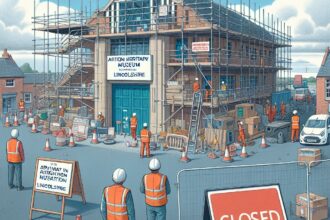Title: Struggling Against Poverty: Current Statistics Unveil Harsh Truths in Boston
New figures from the 2019 Indices of Deprivation shed light on the reality of the poverty-stricken areas within Boston, Lincolnshire, bringing sheer numbers into focus. These statistics released recently, graphically illustrate the circumstances of Boston’s least prosperous neighbourhoods.
Boston 002A (a Lower Super Output Area, or LSOA) holds the unfortunate distinction of being the most impoverished LSOA in Lincolnshire. It possesses an Index of Multiple Deprivation (IMD) score of 49.432, ranking it 2,270 out of 32,844 LSOAs nationally, placing it in stark contrast with neighbouring Boston 001A, which scores significantly better on the deprivation index.
This data also underlines the difficulties experienced in relation to education, skills, and training, areas in which Boston 002A is alarmingly listed as the 15th most deprived area nationwide. The implications of these figures present real challenges for local authorities who aim to counterbalance educational inequity and offer improved prospects for the local young population.
Intriguingly, Boston 002A’s considerable deprivation is juxtaposed with the reality of areas like Boston 001A, proving that not all is lost. With a national deprivation ranking of 23,321, this vicinity testifies to the constructive effect of local projects that have successfully addressed particular issues.
What are the real-life consequences for the residents of Lincolnshire? Since these statistics represent the tangible lives and difficulties people face, mitigating deprivation extends beyond the confines of an Excel file. The ambition is to enhance the availability of employment, accommodation, education, and healthcare facilities, instigating substantial changes that touch the lives of Boston’s inhabitants daily.
Lincolnshire Council is striving to confront these issues through carefully planned interventions, but the participation and awareness of the community are absolutely crucial. As new information becomes available, the aspiration is for future data to narrate a more encouraging tale about Boston.
Data for this article was sourced from Lincolnshire County Council’s open datasets. View the source [here](https://lincolnshire.ckan.io/dataset/c84b4e22-e3a7-44f0-a880-833ab3780f58/resource/22d40029-c9ee-43a4-8d3b-c606c75935c6/download/indicesofdeprivation.csv).









